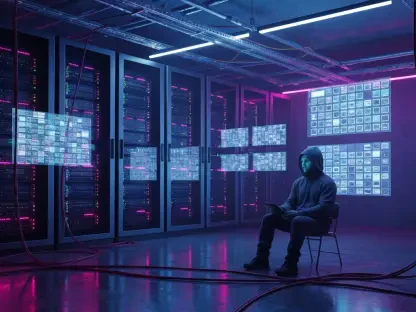Online retail is a rapidly growing industry that offers consumers unparalleled convenience and choice; from fast-fashion global retailers to bespoke boutiques and one-of-a-kind creations, everything can be sourced and bought online. In 2023, global sales reached $5.8 trillion, and this is projected to grow by 39% in the next few years. Experts predict that by 2027, this number will cross the $8 trillion mark.
Thanks to social commerce, it is easier than ever for businesses to convert sales online through online sales platforms embedded in social media sites. To differentiate an online retail business, customer experience, customer service, brand engagement, and personalization have become important factors. Augmented Reality (AR) has come to the fore as a solution that ticks all the boxes; using technology to create innovative new ways to reach customers online.
Here’s how AR can help your business create a personalized online retail experience:
What is Augmented Reality?
Augmented Reality (AR) integrates digital information with the user’s environment in real-time. It layers a real-world environment with artificial, digital information, creating a mixed-reality experience. This technology has several use cases across various industries, the most popular being:
Marketing: When AR is added to static content, the digital elements bring the content to life. AR enhances flyers, billboards, storefronts, and even packaging. It also allows marketing teams to create unique, targeted consumer experiences and increase user engagement by adding 3D animations, website links, or videos to static mediums.
Medicine: Augmented reality has provided medical students with a realistic study approach, thanks to 3D anatomy modeling and surgery simulations. Studies show that medical schools are increasingly turning to AR to enhance the learning environment, and that the technology has been consistently used since COVID-19 in distance-learning environments.
Logistics: In large warehouses, AR plays a vital role in providing fast and efficient routes for inventory mapping. Workers can quickly locate where items are by scanning orders and following AR prompts pointing out the best route to find an item.
Tourism and Travel: Interactive exhibitions, historically accurate video re-enactments, and simulations enrich the tourist experience, providing a fun way to learn more about cities, art, and historically significant events. A great example of AR used in travel is Google Maps’ AR integration called Live View. The days of running in circles trying to orient yourself are over; Google Maps now allows users to scan their surroundings, and follow the arrows that appear on the screen when walking in an unfamiliar city. Travel apps have also effectively used AR to help users easily locate free Wi-Fi hotspots, transport hubs, accommodations, restaurants, and other recreational activities in the vicinity, simply by scanning buildings in their surroundings using their phones.
Gaming: Arguably, one of the best-known use cases of AR came in the form of a game that took the world by storm; Pokémon Go. The game transformed surroundings across the world, providing a rich, interactive digital experience where users can “capture” Pokémon. This viral game brought AR to the mainstream.
What is Augmented Reality Shopping?
Augmented Reality has found its way into the online retail space and has revolutionized the shopping industry. AR enables customers to browse virtually, view products, and even try them on. It also provides a unique personalization experience, allowing users to change the colors of clothing items, play around with materials, and compare sizes. When customers have more information and can quite literally see themselves in an item, sales increase.
AR has taken off in the retail world, providing brands with an opportunity to really connect with younger audiences through personalized and interactive marketing campaigns. According to Ying Zhu, an assistant professor at British Columbia’s Faculty of Management, “Brands like Nike are likely to engage their younger target audience through social media and AR apps.” Online retail has been rejuvenated by social media and AR and the two interplay beautifully to create unique brand, marketing, and shopping experiences.
Accenture reported that the social commerce industry is set to treble over the next three years, particularly in comparison to traditional e-commerce. The report details how global social commerce sales are set to grow exponentially from $492 billion in 2021 to $1.2 trillion in 2025. Social commerce refers to sales via social media platforms, and this booming market has benefitted from AR technology. Brands like L’Oreal have capitalized on the intersection of social commerce and AR by creating lipstick try-on filters that allow users to shop for different shades of lipsticks.
Social commerce, the ability to make sales via social media platforms like TikTok Shop, has boosted online retail. With the help of augmented reality, the industry is expected to grow exponentially. AR enables virtual try-ons as filters on social media and adds an element of personalization and product visualization to brands. Brands looking to target younger consumers can use the powerful combination of AR and social media to attract tech-savvy audiences, who are already native users on platforms like Instagram and TikTok. Accenture reported that 62% of global commerce spenders by 2025 will be Gen Z and Millennials, who look to social media for inspiration, recommendations, and reviews.
Benefits of Augmented Reality in Retail
There are a number of benefits to utilizing augmented reality in retail.
Customers relate to a brand and its products better if they’re able to visualize products in their homes, in their spaces, and on their bodies. Sephora has made excellent use of social commerce and AR by developing apps that allow users to virtually try on makeup and color-match products like foundation and lipstick before they make a purchase. This boots customer confidence and makes sales more likely, and reduces the likeliness of returns or exchanges. AR improves the social commerce experience for consumers and boosts the sales of brands.
Lowe’s created an app called “Fix in Six”. This app proves that customer service can be outsourced to technology without losing the personal touch. Fix in Six provides step-by-step guidance on how to solve household issues. All they need to do is open the app on a smartphone with AR capabilities, point to the household item they need assistance with, and follow the instructions that appear on their screen. This approach improves customer service.Epsilon and GBH surveyed 1000 adults in the US and found that 80% of adults are looking for personalization from their retailers. The online market is incredibly competitive, and AR is a tool that provides differentiation and unique solutions to retailers. Data insights from customer online behavior and preferences can be used to create personalized brand experiences.
AR can be a tool for driving customer engagement through fun, and impactful brand experiences. Ikea created an app allowing customers to visualize furniture in their homes, encouraging well-considered purchases. Customers were impressed with the entire experience, which saved them time and money and allowed them to shop intentionally online.
Another helpful use case for AR in retail is using the technology to provide customers with more information in an engaging way. This is especially useful for high-end luxury products where the price point can be justified by allowing the customer to follow the manufacturing and development processes, enhancing appreciation product’s true value.
Augmented reality provides the retail industry incredible new ways to engage, inform, and relate to customers. Brands can create fun, engaging experiences for customers, tell their brand story and product journey in interesting ways, and be of assistance to consumers in real time, placing emphasis on customer satisfaction. Social commerce is a rapidly growing industry that offers consumers all the convenience of shopping online, and AR ensures they don’t lose the benefits of being in-store.
Successful AR Retail Campaigns
Since Augmented Reality burst on the retail scene, innovative marketing campaigns have helped companies refresh their image, reconnect with customers, and launch new products successfully. Here are some of the most iconic AR campaigns:
IKEA: #PutATreeOnIt (2017)
In 2017, IKEA infused its already successful AR furniture visualizing app with some festive cheer and created the “If You Like It #PutATreeOnIt” campaign. Users could choose from an array of true-to-scale Christmas trees and visualize the fit of the tree in a space before making a purchase.
The IKEA Place App is incredibly popular, owing to its usefulness and innovation and the Christmas campaign further cemented the ability to use AR for fun, meaningful experiences that make online retail an experience.
Pepsi Max: Unbelievable Bus Shelter (2014)
London commuters were in for a surprise in 2014 when Pepsi promoted Pepsi Max using AR at bus shelters. The normally see-through glass panels were transformed into screens with cameras projecting the regular “view” of the street. AR was used to depict alien abductions, tigers running through the streets, and robots laser-beaming crowds. It was a huge success, garnering over 2 million online views and 24,000 shares in one week. The team’s hyper-realistic display created a genuine element of surprise and an iconic moment for the brand.
Pizza Hut: AR Menu Experience
Engine Creative, a UK-based digital agency, is behind the innovative Pizza Hut AR Menu experience. The idea was to create the feeling of a pizza night through games like a family Trivia Challenge. Users were also able to order via the app and engage with the hidden features of the interactive menu.
Stockholm is your Canvas (2015)
Stockholm Art Week demonstrated how AR can be used for creative expression and inclusion when they opened up the exhibitions using augmented reality. They created an app that allowed all artists to submit their artwork, which was included in the official catalog. People could walk around the city and scan Art Week symbols, which would then be displayed as art on their phones. Not only did this boost the art culture of Stockholm, but it gave countless new artists a platform to showcase their work.
Lacoste LCST: AR Campaign (2014)
Lacoste’s in-house brand, LCST, created a unique shoe-shopping experience for customers in-store. Combining both 3D product modeling and AR, customers could virtually try on different LCST shoes. While in-store, customers could place their feet on a floor graphic, and using the app, they would see a 3D model of the new sneakers. Lacoste delivered the try-on experience to over 15,000 customers without the hassle of sorting through different sizes, styles, and colors.
Conclusion
Augmented reality inspires creativity and innovation in online retailers, allowing them to provide customers with personalized experiences. By using this technology, retailers and brands can provide better customer support, improve the customer experience, and provide personalization in exciting ways.
AR has several use cases across various industries, but this technology breathes new life into online retail. Thanks to virtual try-on features, customers can see what an item would look like, easily compare sizes, and “try on” different colors and styles. This improves the certainty of the product, boosts sales, and reduces the number of exchanges and returns for a business to process.
AR also lends itself beautifully to creating exciting and engaging brand experiences and activations. A number of companies like IKEA, Pepsi, and Pizza Hut have used augmented reality to turn the mundane into the magical; from shopping for Christmas trees you can visualize in your space at home to making ordering pizza fun for the whole family. AR unleashes creative potential and brings brand identity to life.









